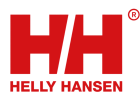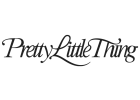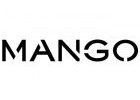Get ready for EPR for textiles
Combining services of different Reconomy’s brands to enable textiles EPR .
What is Extended Producer Responsibility (EPR)?
EPR is an environmental policy where a producer’s responsibility for a product is extended to the post-consumer stage of a product’s life-cycle.
Producers could be manufacturers, importers, brand owners, retailers, distant sellers and foreign producers. The inclusion of textiles into EPR schemes aim to improve recycling and reuse rates, and generate positive environmental change on a global scale via incentives and fees.
Let us help your business address the environmental impact of fashion
Our global solution is designed to assist organizations in managing the intricacies of textile Extended Producer Responsibility (EPR) regulations. Our all-in-one solution combines comprehensive, technology-driven, modular services, providing a streamlined approach to addressing EPR challenges.
Horizon scanning
Stay updated on global environmental legislation and gain insights to navigate evolving compliance requirements with the help of our international compliance team. Our experts guide you through the complexities of environmental laws, helping you reduce risks and maintain compliance.
Data Management
Navigating complex legislation requires accurate data for informed business decisions. Our approach integrates high-quality data management with cutting-edge tools, making compliance reporting more efficient and streamlined.
Environmental Compliance
Our global Producer Responsibility Organization (PRO) operation is designed to simplify compliance, whether you need support through the entire process or just a portion of it. We offer flexible assistance to ensure your compliance journey is as smooth and straightforward as possible.
Omnichannel Take-back
Extended Producer Responsibility (EPR) legislation often requires mandatory take-back programs. To meet this need, we offer a comprehensive solution through integrated software and an expansive logistics network. This complete ecosystem effectively manages textile take-back on a global scale.
Repair
Producers may be obligated to provide consumers with access to repair services to extend the lifespan of their products. Through our repair network, we can restore used textiles, making them suitable for reuse or resale, and offer advice in this area.
What does EPR for textiles mean for you?
There are various aspects you will need to understand and prepare:
Global obligations and legislative timescales
What do you need comply to?
Your financial impact
How does it influence your organisation?
Data and reporting requirements
How to collect data and how to use it efficiently?
Setting up take-back, reuse and recycling
Is your network ready for this challenge?
Are you ready for EPR in textile?
Because we are!
Powering millions of return transactions every year for some of the world's leading brands
Insights & Resources
Learn more about customer preferences, tips and tricks to improve your returns flow and latest trends in returns management.
Our products
Learn more about our modular products that we combine to build solutions that manage your returns.
Sustainability
Sustainability is at the core of our business, Everything we do, we do with sustainability in mind.
Frequently Asked Questions (EPR for Textiles)
Extended Producer Responsibility (EPR) for textiles places legal and operational responsibility on producers (manufacturers, importers, brand-owners, retailers) to manage the entire lifecycle of textile products (not just until the consumer purchase, but through take-back, recycling, reuse, or disposal. For businesses in fashion, apparel, household textiles or accessories, this means that your sustainability and circular-economy strategy are no longer optional) they are an integral part of compliance and competitive advantage.
Failure to prepare can lead to:
- Penalties or enforcement actions in jurisdictions with active textile-EPR schemes.
- Additional cost burdens (fees, registration, data reporting) which may hit margins.
- Risks to brand reputation as regulators and consumers increasingly expect circular solutions. (Sources: European Commission + RLG)
As the European Commission’s “Strategy for Sustainable and Circular Textiles” shows, textile-EPR is moving from future proposal to imminent reality.
By engaging now and putting systems in place (data management, take-back networks, repair/ reuse) your business can turn EPR from a cost burden into a value driver (e.g., improved design, stronger brand, circular revenue streams).
In the textile sector, EPR means that producers bear responsibility for the end-of-life stage of their products; including take-back, collection, recycling or reuse, and reporting on the volumes and flows of product placed on the market.
In practice this means:
- You must report data metrics on volumes of textiles placed on the market, and often on downstream flows (recycling, reuse, disposal).
- You may be required to establish or participate in take-back or collection schemes, so that used textiles can be recovered.
- You may pay eco-modulated fees (higher or lower depending on product design, sustainability of materials) to fund the waste-management system. (Source: RLG)
- You will likely need to integrate this into your product-design, supply chain and logistics strategy (e.g., repair networks, recycling partners, data systems).
The key point: the burden shifts upstream to the producer rather than municipalities.
Textile EPR schemes are already live in several jurisdictions, and many more are in legislation or draft stage:
- In Europe: Countries such as France, the Netherlands, Hungary and Latvia already have textile-EPR obligations in place. (Source: RLG)
- In the U.S.: While national federal legislation is not yet fully enacted, several states (e.g., California via the proposed SB 707 bill) are progressing legislation for textiles EPR.
Therefore, if you operate globally (or sell into these jurisdictions) you will likely have an obligation now or soon. It’s crucial to map your product portfolio and geographies and check whether you qualify under the “producer” definition in each region. (Source: RLG)
Complying with textile EPR typically involves several steps:
- Register with a recognised Producer Responsibility Organisation (PRO) or scheme in each jurisdiction where you are obligated.
- Report data on volumes of textiles placed on the market (by product category, weight/material, etc.) and downstream flows (reuse, recycling, disposal).
- Pay eco-modulated fees, if applicable, based on design, material sustainability and product category.
- Implement or participate in take-back/collection systems, repair networks, and ensure items are routed for reuse or recycling rather than landfill.
- Build or partner with service providers to handle data management, compliance reporting, logistics/collection, repair, and recycling.
The good news: at Reconomy/ReBound we provide a modular, technology-driven all-in-one solution that can manage these obligations for you; from horizon scanning to take-back logistics and repair networks.
- Consumer clothing, footwear and accessories.
- Household textiles such as towels, bed linens, curtains, cushions (in some schemes).
- Workwear, uniforms, possibly bags and leather goods depending on national definitions.
It’s important to check local regulations since definitions and inclusion/exclusion vary
Eco-modulated fees are charges that producers pay under EPR schemes where the fee amount is adjusted (modulated) based on environmental attributes of the product — e.g., design for recyclability, minimal material complexity, use of recycled fibres, repair-friendly design. (Source: RLG)
This incentivises producers to design more circular products, lower waste impact and reduce the cost of downstream material management.
To stay ahead of textile EPR developments and regulatory changes:
- Follow ReBound and Reconomy on LinkedIn.
- Regularly check the Reconomy blog.
- Subscribe to UK-/Europe-based updates.
- For Europe regulatory tracking: European Commission’s “Strategy for Sustainable and Circular Textiles”.
- For North America: Monitor state-level developments (e.g., California SB 707) and specialist compliance-services sites.
Because textile EPR involves multiple, complex components (horizon-scanning legislation, data management/reporting, logistics for take-back, repair/reuse networks, regional variation across geographies) partnering with a specialist allows you to:
- Leverage expert compliance knowledge (keeping up with evolving global regulation).
- Avoid heavy upfront investment in systems and networks.
- Scale regionally as your business grows, without replicating infrastructure.
- Maintain focus on your core business (product, brand, retail) while compliance is handled by specialists like Reconomy and ReBound.











